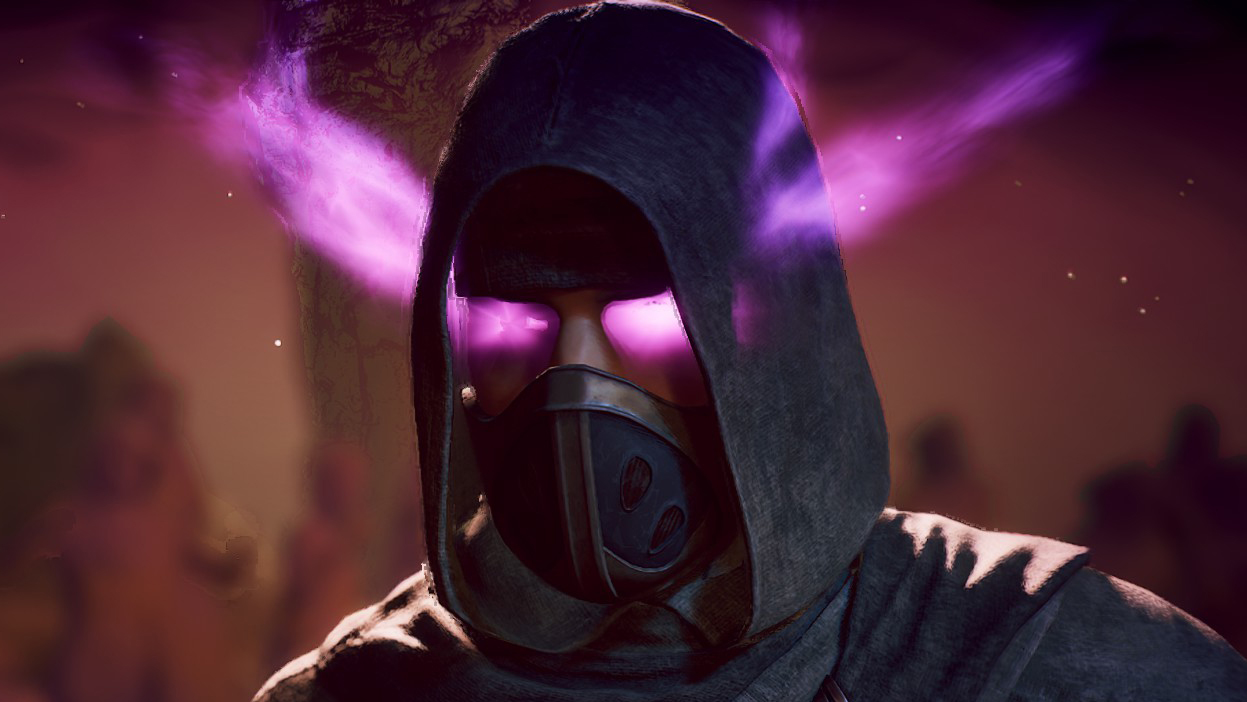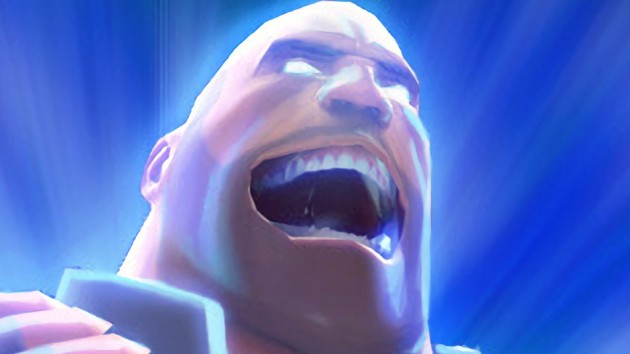
If you need a break from the rogues, wizards, and knights of Baldur’s Gate 3, I highly recommend switching things up with the rogues, wizards, and knights of Trine 5: A Clockwork Conspiracy, which continues the series’ long-standing puzzle platforming excellence. This quinary sequel certainly plays it safe by sticking very closely to Trine’s established co-op playbook, but it does make some key improvements by significantly ramping up the difficulty and complexity of its puzzles, expanding upon Trine 4’s progression system, and adding several unique and memorable boss fights. That said, it still hasn’t broken out of the series’ rut of bland combat sections that pad out the adventure, or conjured up a story that doesn’t pale in comparison to its superb puzzles and platforming. That’s not particularly exciting or revolutionary, but it’s more Trine – and that’s anything but a bad thing.
Trine 5 follows in the footsteps of its predecessors (aside from Trine 3, which we don’t talk about) as a 2.5D puzzle platformer where you and up to two co-op partners play as the three heroes of Trine: an anxious wizard named Amadeus, an obese knight called Pontius, and Zoya, a shady thief. The story begins when an evil queen bizarrely decides to take over the kingdom she’s already ruling using an army of robotic soldiers. The big bad is about as silly and mustache-twirlingly evil as one can get, but the absence of an interesting antagonist is forgivable because the protagonists continue to be so endearing and well written. Still, even with a lovable cast of new and returning characters, the story is extremely predictable and not particularly interesting, which is par for the course for the series.
One of the most significant improvements is that puzzles are oftentimes pretty darn challenging, which is especially nice to see after Trine 4’s mostly humdrum obstacles. I pride myself on being an adept puzzle solver, and during Trine 5’s 10 hour story I found myself stumped for minutes at a time on more than a few occasions – that’s always a pleasant surprise.
Each character gains such a wide variety of abilities by the end that it’s easy to forget about one.
A lot of that difficulty comes from the fact that each character gains such a wide variety of abilities by the end that it’s easy to forget about one of the tools in your kit, or neglect to consider how new abilities might interact with old ones to allow for new solutions. For example, Amadeus eventually gains the ability to reverse gravity on his summoned objects so they float in the air like a balloon, which – when combined with Zoya’s ability to teleport to any object her rope can attach to – allows her to reach areas that were previously inaccessible. Clever interactions like that are common, and pretty awesome when it finally clicks.
It’s also cool that some puzzles have more than one solution, which allows you to get creative when the mood strikes you. While each obstacle clearly has a right way to do it, if you can’t figure one out or are just feeling rebellious, there are plenty you can get through by making clever use of your abilities, doing something unexpected, or just getting lucky. You can also return to previous levels with new powers acquired throughout the story, which give you new ways to complete old levels. Some of those actually allow you to gain access to secret areas that were inaccessible on your first run, so it’s worth revisiting those stages.
It’s cool that some puzzles have more than one solution.
A returning feature from Trine 4 is that puzzles change depending on the number of players you’re working with, and the extra steps required to solve them with friends often make those feel like the definitive versions. You might find a section that just lets you drag a cart around to get through in solo mode, but if you come back with co-op partners you’ll find that cart tied up, so one of you has to cut it free while another pulls. That said, some sections just add a few extra levers to pull or pressure plates to stand on to keep a few players busy while one actually does the solving, which feels uninspired. Still, no matter which version you’re playing, each offers a pretty decent challenge, which is a fantastic change.
What We Said About Trine 4: The Nightmare Prince
Trine 4: The Nightmare Prince is a sequel that plays it very safe – which, in this particular case, is for the better. Coming back to the traditional style of co-op gameplay and puzzle solving that made the first two games so delightful is exactly the kind of refocusing that the Trine series needed after the misfire of Trine 3. Some lackluster puzzle designs, technical issues, and a lack of difficulty stand in the way of it overtaking Trine 2 as the best of the series, but Trine 4 still remains a shining example of how cooperative gaming should be, and is one of the most gorgeous looking 2.5D games of 2019. – Mitchell Saltzman, October 7, 2019
Score: 8.5
Read the full Trine 4: The Nightmare Prince review
Combat continues to be by far the weakest part of Trine, and I’m still not quite sure why Frozenbyte continues to include it. I sighed with annoyance every time I was locked into a room with a handful of the same boring robots and rat warriors who mostly succeeded in wasting my time as I slapped them with Pontius’ sword or Zoya’s arrows until I could get back to doing puzzles. There’s no strategy to it, and no mechanics are added over time, either, aside from a few new abilities that help you smack around the enemies more effectively – you basically just let Pontius go ham until it’s over and you can move on. Instead of serving as a breath of fresh air between platforming sections, those fights just interrupted my flow and dragged down an otherwise good time. Luckily, you don’t spend a ton of time on it, and for the most part quickly find yourself back to glorious platforming.
Combat continues to be by far the weakest part of Trine.
It’s also unfortunate when one player gets stuck with Amadeus, who is easily the least useful in combat, especially early on before you’ve unlocked most of his combat-focused abilities. If you’re playing in classic mode where only one copy of each character can exist, you’ll mostly have to sit on the sidelines and watch your friends take out the enemies while trying not to get killed. It’s kinda hilarious how lopsided it is.
The exception to the unwelcome combat encounters are the boss battles, which usually make for a good time since they incorporate puzzle elements. In most fights, before a boss can be damaged you’ll have to figure out a trick to bring their armor down or destroy their barrier of protection, and as the fight progresses the boss does their best to stop you from repeating the same method of bypassing their defenses. For example, in one fight I had to use a cannon to blast the boss, but then he got rid of my cannonballs and I had to trick him into turning a ball of cabbage into stone so I could use that as replacement ammo. Incorporating cool little mechanics like that into combat-focused sections is exactly the type of thing I’d hope for from a game whose main strength is its mind-benders.
There are a number of difficulty and multiplayer options to liven up the experience, from a hard mode that gives you just a single respawn during each section, to an “unlimited” multiplayer mode that allows for up to four players with no limitation on how many players can choose the same character – though not all of those options are created equal. Hard difficulty is a solid addition that allows for a razor-thin margin of error during platforming, but it also makes combat even more irritating than I thought possible by making that sloppy mess more deadly. Similarly, the “unlimited” mode is good for a laugh or if you have a fourth player who really wants to join in on the fun, but absolutely none of the levels are optimized for the chaos of having everyone play the same character. You can simply brute-force your way through many puzzles and generally just cause mayhem.
This sequel also expands on the progression system offered in Trine 4, and gives plenty of ways to improve your character, many of which are awesome game changers. For example, one unlockable allows Pontius to use his shield to glide, which let me pull off some fantastic new maneuvers. That said, the vast majority of unlockables are combat-focused, and since combat is pretty shoddy, investing in those feels like a huge waste. I mean, who would spend precious points on the ability to slam Amadeus’ boxes down on enemies when you could buy the invaluable perk that allows him to summon even more boxes for puzzle solving instead? That said, at least the combat abilities let you make those sections go by a little quicker.





